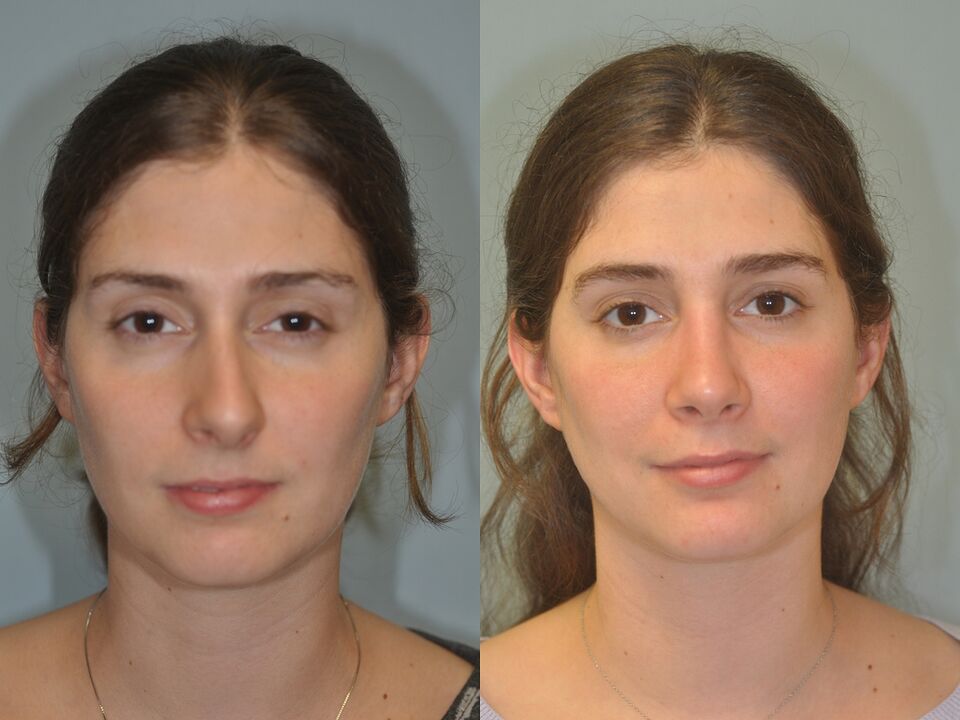
Rhinoplasty (formed by two other Greek words, which means "nose" + "plastic", and therefore actually translated as "plastic nose") is part of plastic surgery, which engages in innate corrections (obtained at the embryonic stage) and obtains nasal deformation throughout life.In short, this is a plastic surgery to correct external and internal defects of the nose.Distinguish between open, closed and non-external rhinoplasty.In most cases, aesthetic and functional deficits are surgically eliminated.
Initially, corrections were made only for injury, serious illness, and obvious congenital defects.Later, plastic surgery began, and most often changed the appearance of the nose based on aesthetic signs.For example, remove the hump, reduce the tip, raise the bridge of the nose, reduce the nostrils, etc.A little story.Surgeons in the ancient world performed rhinoplasty for the first time.She is mentioned in the ancient manuscript of OK's "Ayurveda".In 1000 BC, this document captures most facts about ancient medicine.War requires the unit of face recovery, and people who were dismembered during the battle during the execution of court sentences demanded recovery.Currently, transplantation begins its history.As a correction material, the cheeks or skin on the forehead are used.Over time, Indian technology developed, even in the Middle Ages, even European doctors, mastered it, successfully manipulated the patients.
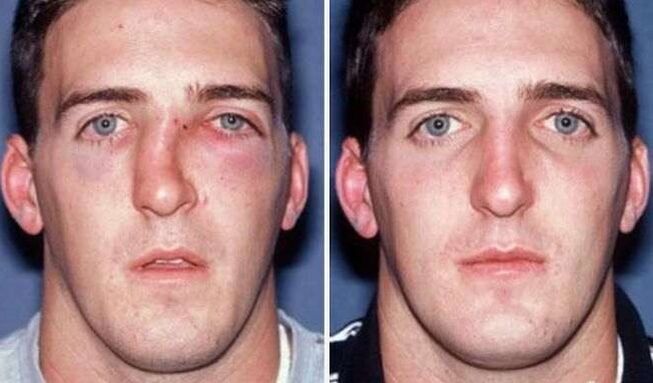
Indications for rhinoplasty
Psychoplasty is performed according to medical and aesthetic indications.In other words, a person just doesn't like the look of his nose.It can have a hump or curve, too large or small, wide or narrow, with a longer nose or a long nostril.It happens that a person's nose is distorted from birth or due to a blow (although it is usually impossible to breathe and requires manipulation to restore nasal breathing).In some cases, procedures are required to correct appearance defects after the first unsuccessful plasticity (which is considered the most difficult surgical intervention).The procedure is only available to people over the age of 18 (if there is no sign of emergency medical treatment).This is due to the fact that bone tissue is formed until the age of 18, cartilage is even at the highest of twenty.This is why the age for rhinoplasty is best for 20-35 years old.Here are the descriptions of the most common questions for men and women to turn to rhino surgeons.
nose
The nature of the problem: There is a small hump at the back of the nose because the nose looks larger and the face is wide open and unsatisfied.Cause: The defect may be congenital, may occur after injury, or may be a result of a previous failure of correction.Removal method: In most cases, during plastic surgery, the hump is removed by a closed or open method under general anesthesia.If the posterior part of the nose is too wide, it is necessary to perform rhinoplasty with osteotomy (reconciliation of posterior bone)
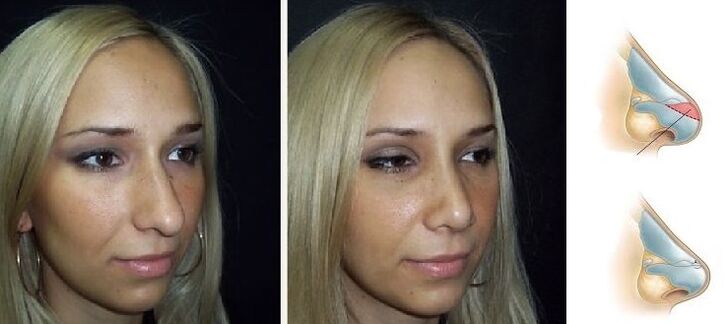
Wide nose
The nature of the problem: A person has a very wide nose, which makes the face huge and rude.Cause: The result of defects, congenitality or failure of hump after injury.Solution: Open correction for osteotomy under general anesthesia.The essence of this technique is to remove part of the bone and then put together the sides.
Nosy's nose is bent
The essence of the problem: the back of the nose is asymmetric.Due to curvature, a person usually cannot breathe at all.This problem refers to the functional indication of surgical correction.How defects occur: In most cases, this is the result of breakage.Although it happens to be bent due to the large growth of the skull during growth.Can you straighten your nose?In most cases, balanced partitioning (diaphragmoplasty) was performed under local anesthesia.The nature of the operation is shown in the figure below.If that's not enough, in this case they can resort to Rinoseptopplasty (when partition correction is used in combination with other flaws in the shape of the nose).If the injury is very serious, they resort to reconstruction plastics (more serious surgical interventions, usually performed at several stages), a part of the plastic surgery research method that restores the nose after a severe injury and is completely gone.In this case, the surgeon's task is to restore osteocherine and skin integrity.
Saddle shape of nose
The essence of the problem: The nose is too low.Because of what, the shape of the nose resembles the saddle on the outline.Cause: The defect may be congenital and may cause injury when a portion of the bone or cartilage is damaged.How do you change the situation?The correct shape can be restored by transplanting the rib cartilage, the eardrum (outside the ear), or implanting a synthetic implant.
Big nose
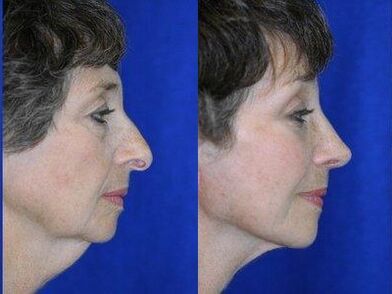
The nature of the problem.A nose that is too big (length or wide) makes the face disproportionate.In this case, most of the time, the tip is very thickened.Cause: Defects are usually congenital.How do they solve the problem?The nature of surgical intervention depends on the cause (in some cases it is necessary to reduce the tip of the tip, while in others it reduces the wings of the nose, but it happens to be necessary to remove the hump).Before you determine that plastic surgeons can often use computer modeling 3D.This allows you to see how your face looks before even doing it.
Problem shape of nose tip
The nature of the problem: The correct facial proportions are violated due to the wrong shape of the tip of the nose.For example, it could be:
- Narrow
- Wide
- Round (with potatoes or bulbs on the nose)
- Lower (crochet)
- kurting
- Fork
How do they solve the problem?Depending on the type of problem, the operation process can be considered.
- To reduce the wide tip, enough to tie the dome of the large cartilage, in other cases, a portion of the cartilage tissue needs to be cut off.
- Round fleshy tips usually require a portion of the cartilage to be removed before the integration of the dome, and often lower the wings during surgery.
- The bifurcated tip of the nose requires the installation of the graft from the patient's own cartilage fabric or rib area or synthetic material.
- This tip may appear too narrow due to the disease associated with rigid loss of cartilage leg.They have been strengthened and they also use transplants.
- When correcting for the lower tip of the nose, the surgeon removes part of the cartilage and secures it in a new position by sewing.
- Another operation of this operation means that the columns of the nose are strengthened to ensure good support to the tip.
- There is a third method to be associated with truncating part of the internal muscle and then pulling the tip upwards
- Curno stability is also eliminated in a number of ways, involving mounting one's own or synthetic grafts at the tip of the nose or nose bridge.
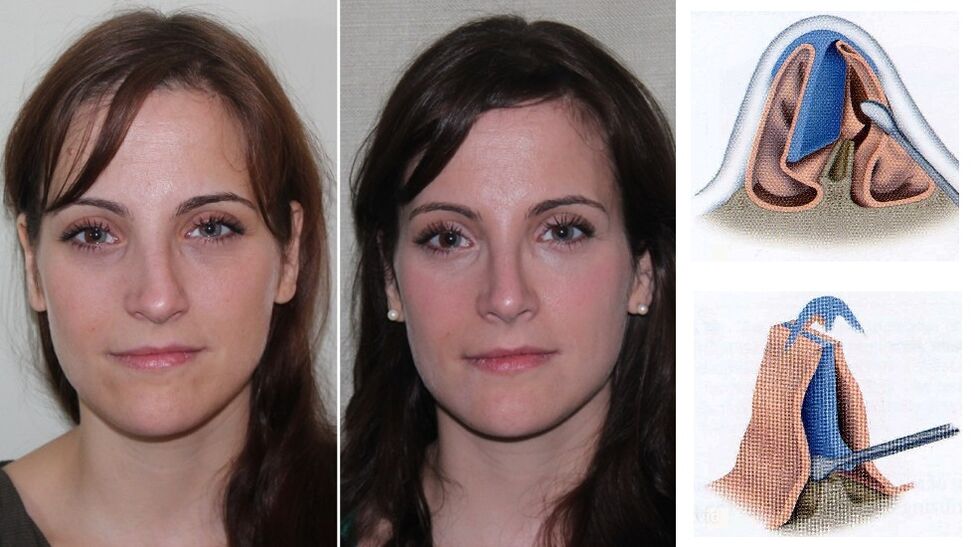
Large or different nostrils
The nature of the problem: disproportionate (too small or too large) or obvious asymmetry of the nostrils can ruin harmony and deteriorate the appearance of the face.How to eliminate defects?The operation process depends on the root of the problem.They can sew the wings of the nose, which may require strengthening the dome of the retired cartilage, in some cases, enough to align the nasal septum.It happens to be necessary to lift or reduce the long tip of the nose
Contraindications for rhinoplasty
Absolute contraindications for rhinoplasty not to be performed under any circumstances:
- Diabetes I, Type II
- Severe cardiovascular diseases coronary heart disease and other diseases contraindicated
- Meningitis, tuberculosis, gonorrhea, brucellosis and other serious viral infections
- Systemic diseases: lupus red, HIV, Lepra, etc.
- Allergic reaction to anesthetic components.
- Chronic diseases: cirrhosis, hepatitis, etc.
- cancer
- Bronchial asthma
- Blood clotting problems
- Mental illness
Relative contraindications (If the disease is cured, rhinoplasty can be performed):
- Age up to 18 years old (remedies can only be accepted in the most extreme cases)
- Exacerbate inflammatory diseases (sore throat, frontal lobe, sinusitis, otitis media)
- Ars, Sars
- Skin Diseases
- Age after 50 (surgery if there is no chronic disease associated with absolute contraindications)
- Pregnancy, lactation, menstruation
How to pass rhinoplasty
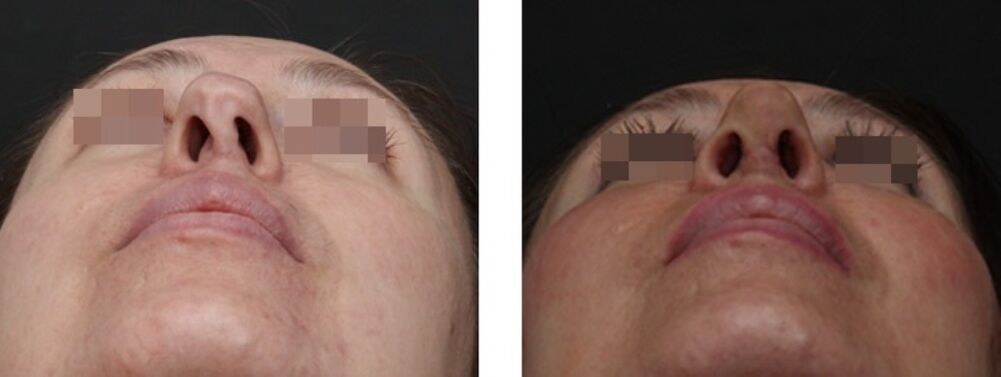
Speroplasty is performed only under general anesthesia.The duration of the process depends on the complexity of the surgical intervention and ranges from 30 minutes to 2 hours.During the first consultation, the doctor proposed to perform 3D modeling to fully understand the patient.This helps to show one the end result.When he imagines that it ultimately proves, it is easier for him to make conscious choices.Before the surgery, the patient needs to pass a general biochemical blood test and a general urine test.Blood tests for HIV and blood test analysis for prothrombin are also required.If necessary, it is necessary to make an electrocardiogram and examine the profile doctor.Preoperative patient preparation includes the following suggestions:
Two weeks before the operation:
- Refuse to drink alcohol (especially carbonated beverages)
- Do not take blood thinners
- Don't sunbathe
- No smoking
One week before the program:
- Get all the necessary medicines
- Minimize the use of cosmetics
- Buy contact lenses to replace glasses (for people with poor vision)
10 hours before surgery:
- Don't drink anything (or drink the least amount of liquid)
- Do not use perfumes and cosmetics
- Prepare clothes that don't need to take off your head
- Take out the jewelry
Rehabilitation after rhinoplasty
The tissues after rhinoplasty occur one year after rhinoplasty.To speed up the healing process of the tissue and avoid adverse consequences, it is important to strictly observe the doctor's advice on postoperative behavior.In the first few days after the operation, the patient felt uncomfortable because he had to constantly wear a cast and endure a tampon in his nose.This means you can only breathe through your nose and your mouth will usually be dry.The temperature can rise.I want to drink.Cleaning and brushing teeth is difficult.Remove gypsum and earlier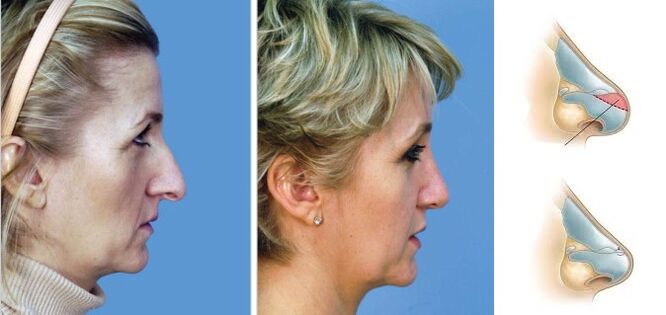 it's out of the question.This can lead to adverse deformation, increasing swelling and tissue healing problems.
it's out of the question.This can lead to adverse deformation, increasing swelling and tissue healing problems.
The first four days of edema will intensify and then begin to subside.To limit swelling, cold pressing is recommended on the first day.After removing the gypsum seasoning for about two weeks, people will continue to experience discomfort caused by nose edema.Perhaps there is a loss of sensitivity in the field of surgical intervention.The bruises are still visible.At present, breathing from the nose is easier.During the rehabilitation process, the surgeon recommends following restrictions in the first week:
- You can't eat too salty, spicy, acidic and other simple foods.
- You can't tilt your head down, take a shower, lift weights (including spending children or pets higher than 5 kg) and recharge.
- You just need to sleep on your back on your high pillow.
A person will be able to go to work two weeks after the operation, although it is necessary to avoid a lot of physical labor.Therefore, it is best to plan your holiday during this period so that you can provide a full break and rest for a quick recovery.
Within two months after rhinoplasty:
- It is necessary to rinse the nasal cavity regularly
- You cannot suffer severe physical effort, exercise or go to the pool
- You can't drink
- You can't smoke
- Reduce or eliminate coffee use
- No visits to the bathroom or sauna
- It is necessary to avoid direct sunlight on your face
- You can't wear glasses.They affect the shape of the nose bridge, so you need to wait until the bones are fully healed.
Possible complications after rhinoplasty
If there is bruising and swelling immediately after the operation, this is considered normal.They are the direct result of damage during small vessel surgery.After nearly two weeks, the main edema and bruises should have fallen.
Early complications include the following problems:
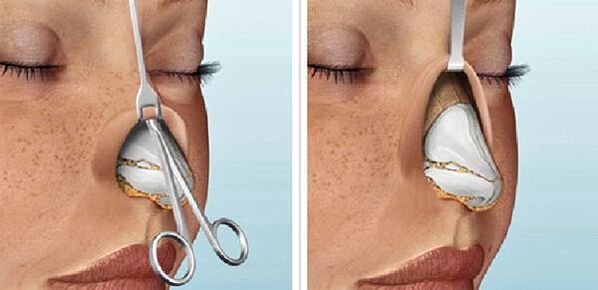
- bleed
- hematoma
- Very strong edema
- Fabric necrosis
- Wound infection
- Discover joints
- Numbness in the tip of the nose
If these problems arise, it is necessary to seek help from your surgeon in time and start treatment promptly and prevent further development.
Advanced complications include:
- Maybe it's the appearance of bone corn
- The formation of ketone scars
- Opinions on the tip of the nose
- The fork of the tip of the nose
- Saddle shape of nose
- Curvature at the back of the nose
- Asymmetry
- The appearance of the hump on the nose
- Divided perforations
- Difficulty in breathing
Repeat actions can be used to eliminate most of the complications listed above.Some of these occur due to surgeon errors, some of them are due to the fault of the patient's misbehavior during recovery, while some of the occurrences of some are explained by various characteristics of the human body.




















